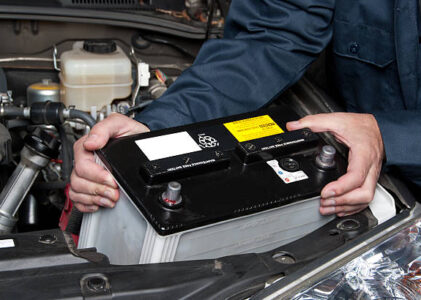The car battery is a crucial component that powers various electrical systems in your vehicle. Understanding how it works, testing its health, and maintaining it properly are essential for ensuring reliable performance and avoiding unexpected breakdowns. In this guide, we will delve into the basics of car batteries to help you make informed decisions about your vehicle’s electrical powerhouse.
- Understanding Car Batteries: Car batteries are rechargeable energy storage devices that provide the necessary electrical power to start your engine and operate various electrical systems, such as lights, radio, and air conditioning. They typically use lead-acid chemistry, consisting of lead plates submerged in an electrolyte solution of sulfuric acid and water. When you turn the key in the ignition, a chemical reaction occurs between the plates and the electrolyte, producing electrical energy to crank the engine.
- Testing Battery Health: Over time, car batteries can lose their ability to hold a charge due to sulfation (accumulation of lead sulfate crystals on the plates), internal short circuits, or physical damage. To determine your battery’s health, you can perform a few simple tests.
a. Voltage Check: Use a multimeter to measure the battery voltage when the engine is off. A fully charged battery should read around 12.6 volts. Anything significantly lower indicates a weakened battery.
b. Load Test: This test assesses the battery’s ability to deliver power under load. A load tester applies a controlled load to the battery and measures how well it holds up. If the voltage drops significantly under load, it’s a sign of a weak battery.
c. Specific Gravity Test: If you have a traditional lead-acid battery with removable caps, you can use a hydrometer to measure the specific gravity of the electrolyte. Low specific gravity indicates a discharged or weak battery.
- Maintaining Your Car Battery: Proper maintenance can extend the life of your car battery and keep it in peak condition.
a. Regular Inspections: Check the battery regularly for signs of corrosion, leaks, or physical damage. Clean off any dirt or corrosion around the terminals and cable connections.
b. Keeping it Charged: Avoid leaving electrical components on when the engine is off and minimize short trips, as these practices can drain the battery. If you don’t use your car for an extended period, consider using a trickle charger to keep the battery charged.
c. Fluid Levels: For batteries with removable caps, check the electrolyte level regularly and top up with distilled water if necessary. Do not overfill, as the electrolyte expands during charging.
d. Temperature Considerations: Extreme temperatures can affect battery performance. In cold weather, the battery’s capacity drops, making it harder to start the engine. In hot weather, fluid loss may occur more quickly.
- Signs of a Failing Battery: Recognizing the signs of a failing battery can prevent you from being stranded unexpectedly.
a. Slow Cranking: If the engine cranks slowly when starting, it may indicate a weak battery.
b. Dim Lights: Dimming headlights or interior lights while idling or at low speeds suggest battery problems.
c. Warning Lights: The battery-shaped warning light on your dashboard may illuminate if the battery is not charging properly.
In conclusion, understanding, testing, and maintaining your car battery are essential aspects of vehicle ownership. Regular inspections and proactive maintenance can help you avoid inconvenient breakdowns and increase the lifespan of your battery. If you suspect any issues with your battery, it’s best to have it tested by a professional mechanic to address the problem promptly. By taking care of your car battery, you ensure a reliable and smooth driving experience.

